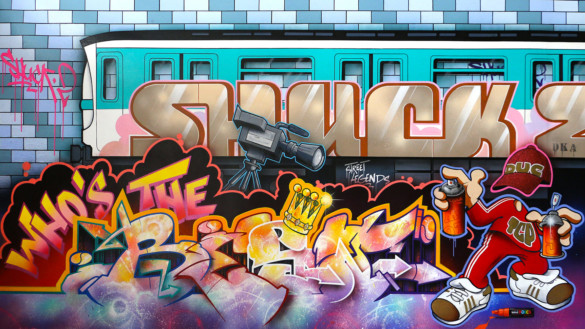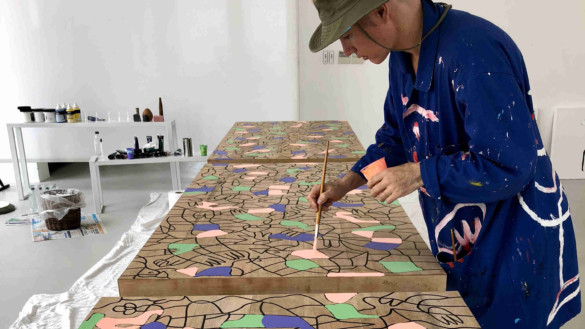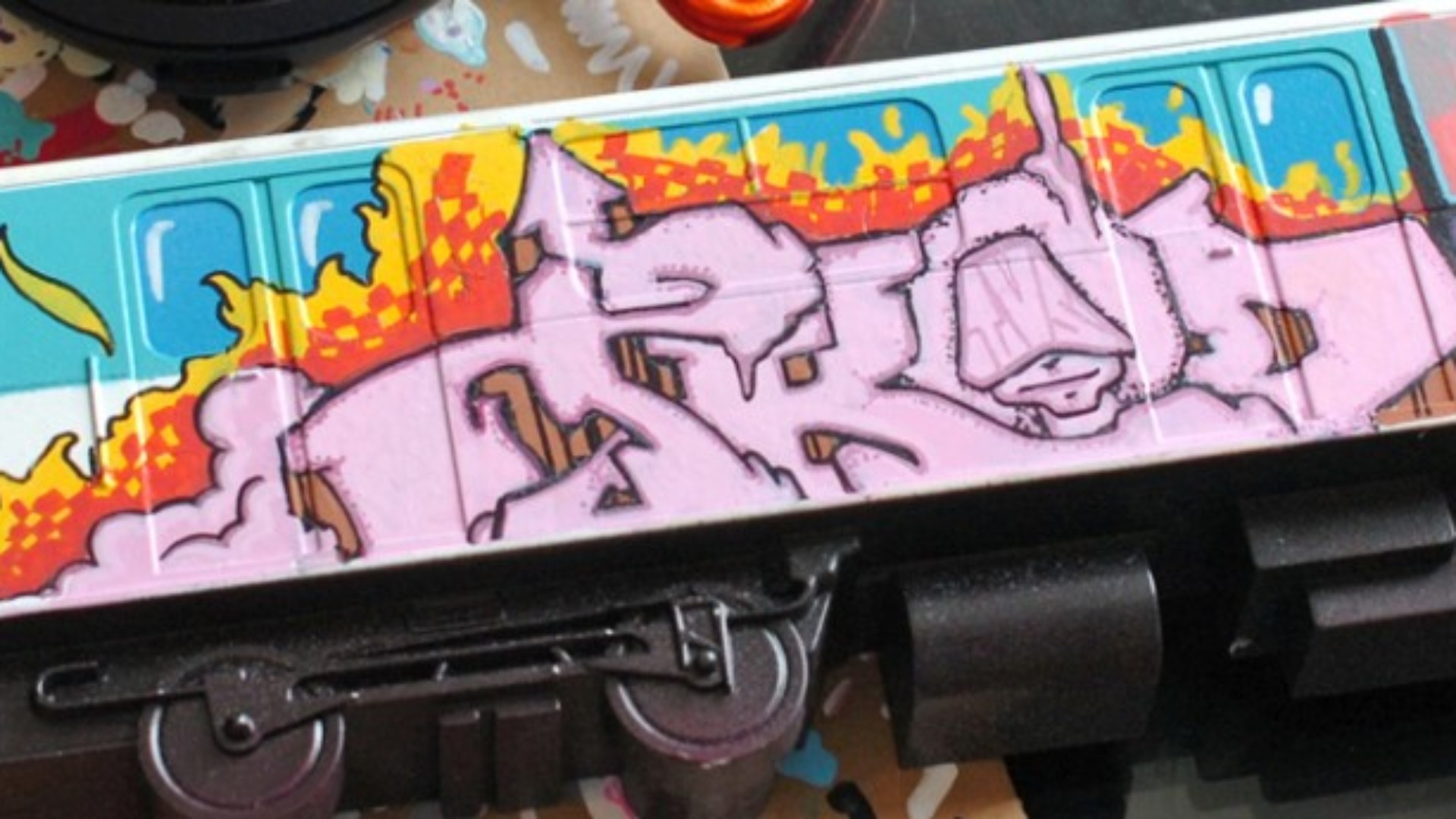
T-Kid 170 Back to the roots
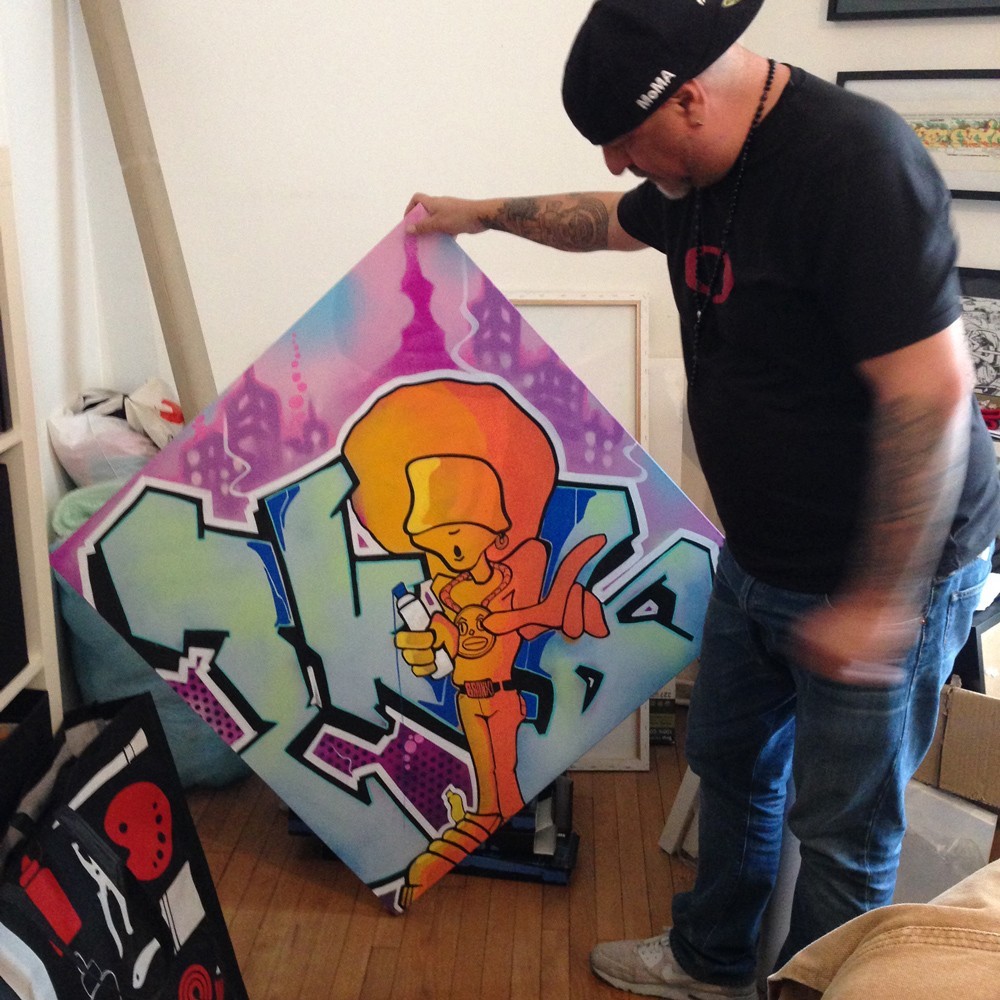
T-Kid170 is a living legend, a pillar of graffiti culture. He comes from the Bronx and, with his paint workshop friends forged a genuine lifestyle of action and creation.
It all started when he put his pseudonym on a neighbourhood wall and then a mural a subway, it was all luck and will after that. It can be anywhere in the world. It’s about passion. T-Kid tells his story. Forty-five years of burners, whole cars, graffiti, frescos, and murals…
T-Kid170 is on Instagram: https://www.instagram.com/tkid170/?hl=fr
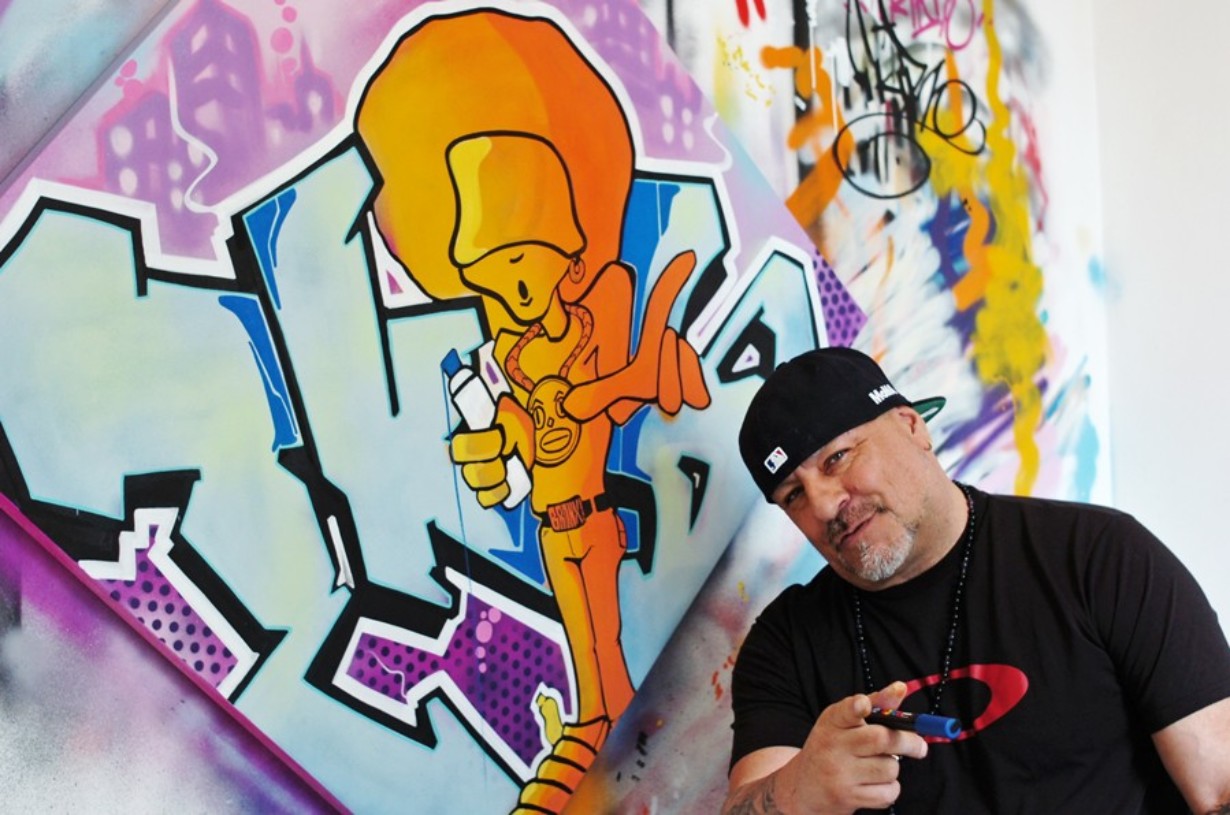
What was it like growing up as a writer in the Bronx?
It wasn’t that I was growing up as a writer in the Bronx, it was just that I was always in the street. And in the Bronx of the 70s, there were a lot of problems and gangs.
When I was a kid, I did acrobatics on the playground swings downstairs from my house and I won a battle against another kid. That’s when the older kids called me King, for King of the Swings. One day, I tagged King 13 on a wall across from the playground. After that, the guys from the neighbourhood gang came to see me and said: “Hey, you’re tagging our turf, you need to be in the gang to do that.” Me, I didn’t even know that turf meant the neighbourhood! They told me they saw my acrobatics on the swings and that it was cool so they weren’t going to beat the hell out of me.
That’s when I started to write King13. It was 1973 and I was 13. I kept the name a while. Then, I quit the gang. I wrote Sen102 in Spanish Harlem. With the Renegades of Harlem, there was Smokey, Dimond Dave, and Danco. And with Sly108 of the Savage Sumari, we were going to have good vandal sessions.
I stayed with the Renegades for two years and in 1977, I was shot. That’s when I decided to leave the gangs for good. I loved graffiti so I took the name T-Kid to start over. People called me Big T because I was big and strong so I kept the T. Kid was because I was usually the youngest in the gang. So T-Kid and 170 for the street I lived on.
Graffiti meant I could leave the street. I liked to go to the tunnels to paint. I got good quick. I did tons of burners under a bunch of names: Dr.Bad, Wake5, Bro2, but T-Kid is what people remember. In those days, in my TNB / The Nasty Boys crew, you had Peser, Mike-Dust, Joker-1, Rase (who was also Cooper), the Rock…
In 1980, I decided to take a break because, among other things, there was way too much violence. I stopped for a year until I noticed graffiti was starting to show up in galleries. That caught my attention. I was invited to paint at the Sam Esses studio with Dondi, Zephyr, Futura, S-E 3,aka Sweet Eric aka Haze, Revolt, Ne aka Min-1, Case 2, Cos-207, to name but a few. Everyone was there, it was crazy! It was the first ever graffiti collection and it was comprehensive.
After that, I participated in a programme called No More Trains, working with young kids arrested for painting subway trains. I had them do what you call Positive community work. I was paid by Krylon and some big companies to clean the gates in the 14th street area. I was also doing paid walls at the time.
I did that for a while but graffiti pulled me back in and I went back to the depots to paint subways. I started bleeding them again, from 82 to 85. I was killin’ it! I did hundreds of nasty burners and that’s where I developed my style. You can find all of that on the Internet and in my film.
I got lucky with Henry Chalfant, who did the Subway Art book with Martha Cooper. He followed my work by taking pictures of it and some people in England saw it, especially the graffiti I did for my dad after his heart attack. They asked me to come to London to paint a wall for a brand of audio cassettes (TDK) and that exposed me to Europe. Ever since then, I go back whenever I can (smile).
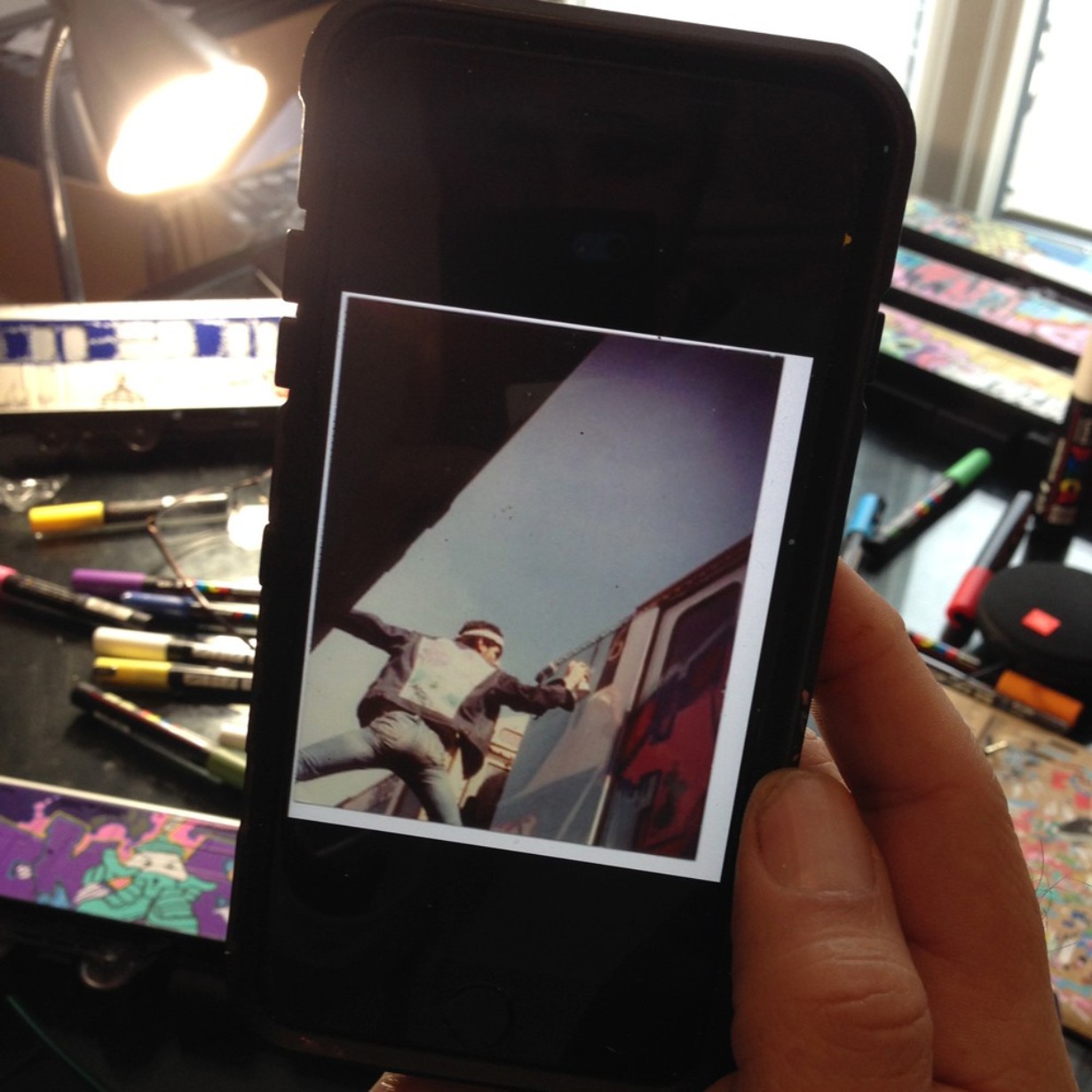
And, in terms of graffiti, was there any competition with other neighbourhoods?
Ha! All the time! That’s why graffiti got so big and so popular. Graffiti is an art that touches everyone. It’s communication. Whenever I did a T-Kid on a subway train in a Ghost Yard [legendary graffiti location, a subway depot], you never knew where it was going: Queens, Manhattan, etc. or Brooklyn, and when my buddy Sonic saw it go by, he was immediately under pressure to do a subway train himself. Whenever a Sonic rolled into the Bronx, it really busted my balls so I would go back.
You can create characters, different letters, but graffiti is still all about tagging your name on one of the trains. It has to move. Your name needs to circulate from one point to another. Everyone was into it: Dondi, Lee … yep Lee was the best, forget it! Everyone talked about Dondi. He was good, but, he really exploded after Martha Cooper took a bunch of pictures of him. One of the best is definitely Lee. The Fabulous Five Lee! Not Fab Five Freddy!
“New York loves graffiti,
it’s part of the city’s culture.”
He’s the hero of the Wild Style movie, right?
There you go! It’s him. Nobody knew what he was writing. He was really discrete. Not only that but it’s funny because Charlie Aheam, who made the movie, called it Wild Style because the guy named Zephyr had a certain style. They say it was a Wild Style. But that’s not true.
Wild Style was Stacy168, one of the graffiti masters, and his crew that also consisted of Jimmy-Hahah, Bac, Chi-Chi 133, etc. Actually, I remember when Zephyr asked me to join his crew. Tracy said: “Does he have a gun?” I answered: “No”, so he said: “Fuck him! ». That was Tracy!
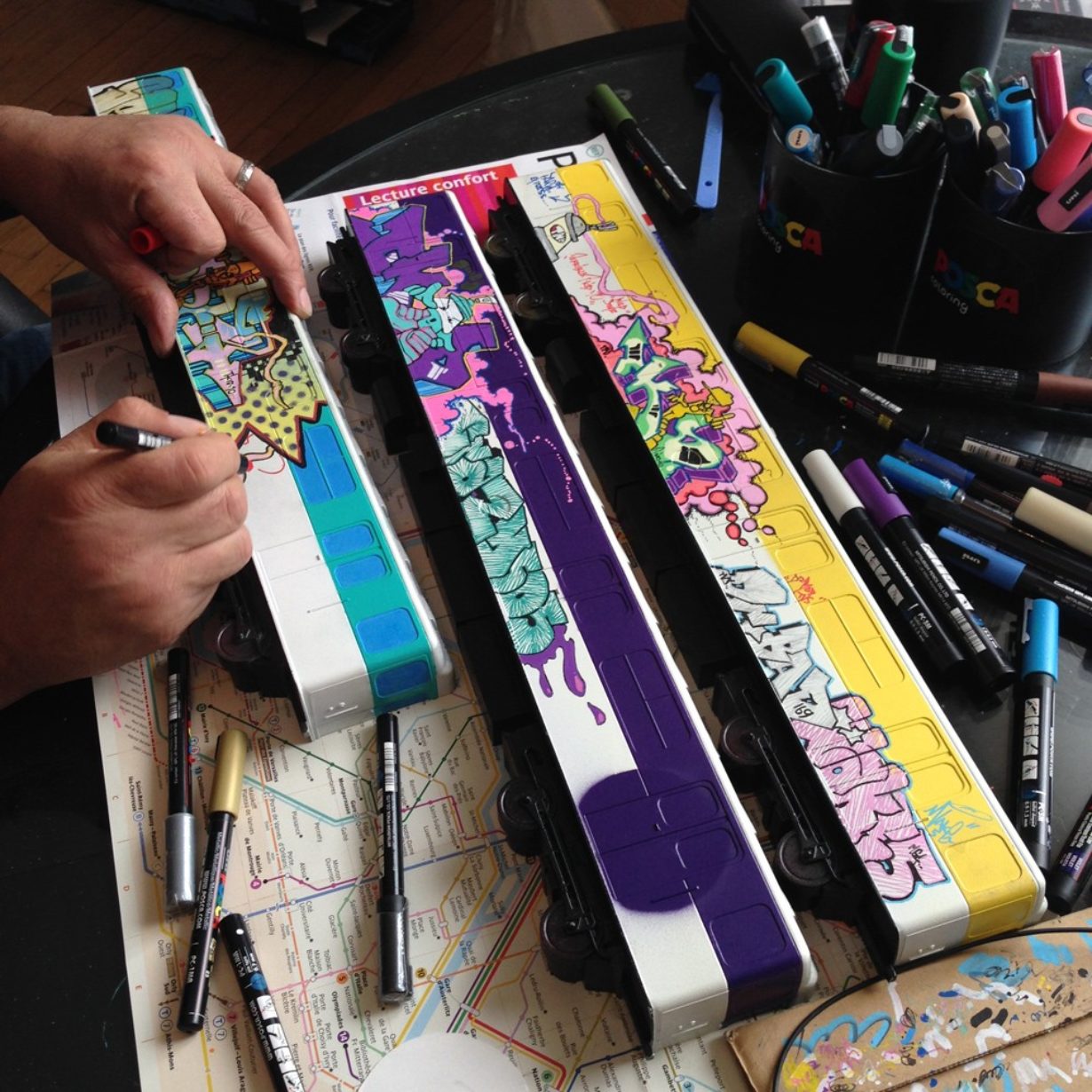
For those who aren’t familiar with graffiti and its techniques, can you clarify a few things and explain what a burner or a whole car is?
Aahhhh, a burner is a style. It’s a complicated style with interlocking, connected letters. There’s the mechanical, robotic, organic, and bubble style. There’s also a colour scheme and when the subway moves, it’s flamboyant. That’s why it’s called a burner. When the subway train arrives at the stop, in full sun, it’s boom! It radiates!
A whole car is when you paint a whole subway car from top to bottom and front to back. There’s also window down, which is when you paint under the windows. There are different types of window down, such as end to end, from front to back. You can also do a one panel above which you can put a throw-up or tag it.
Do the older generations teach graffiti to the younger generations?
Tracy168 taught me graffiti and before him, Padre Dos, who was called Jesus Cruz, God rest his soul. He taught me to paint. He was inspired by Tracy, but mostly by Phase2, the godfather of graffiti who invented all the styles (bubble, mechanical). He’s the man. Padre Dos is a descendant of that guy. He learned by watching him. Padre explained how to draw the letters, where to put the arrows, and especially how to combine them all.
When I met Tracy in 77, he told me I had style and that I would be good if I stuck with it. He saw something in me. He especially taught me to spray, the composition and market value of graffiti. They were my teachers. Padre was my mentor.
The sprays. That was your first painting tool?
Markers were my first tools. Pilot, Uni, Mini, Uni wide, then I used sprays. And my favourites were Red Devil… the cream of the crop, really good.
Krylon had a lot of colours but it wasn’t the best paint. Didn’t cover enough. You had to have a layer of white first.
There was Rustoleum. It was easy to find and they worked good with Gefen fat caps [tampered ends for wide tracing, then different sizes were made available and sold]. There weren’t any caps being sold back then: skinny, super skinny, fat… you had to invent everything.
When you talk about subways, you get very emotional!
That’s for sure yeah… I lived it, it’s my culture. Doing a train, there’s nothing better in the world. I did the “Breakdance” graffiti, when the car arrived at the 96th stop on line 2, we were on the platform. It was crowded and people applauded. I swear! It’s an incredible moment. New York loves graffiti, it’s part of the city’s culture.
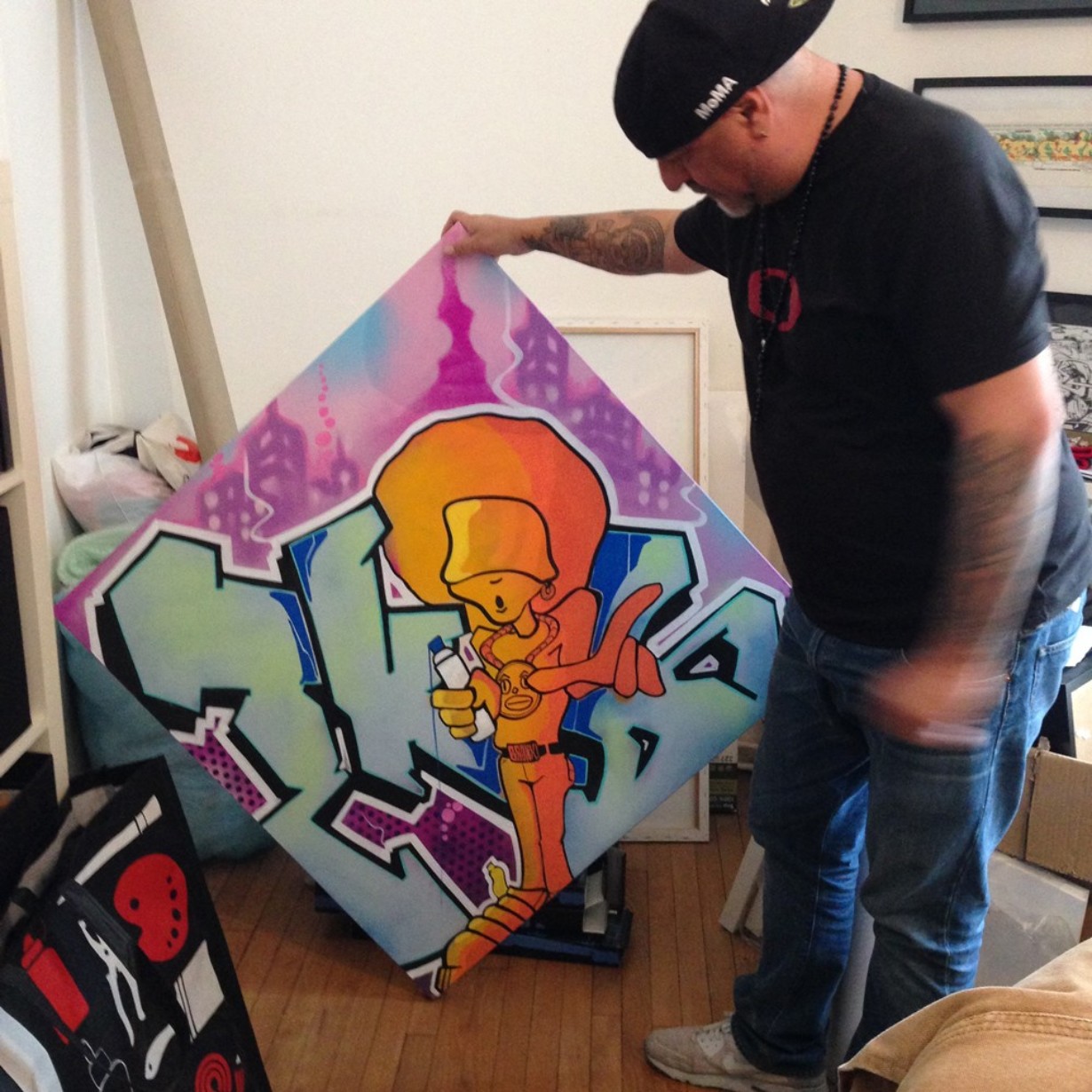
On another subject, how did you find yourself at the Villiers-le-Bel workshops in the 95 department?
I was painting on the palisades at Châtelet and a teacher went by with her class. The kids wanted to paint and I gave them a few pointers. When the teacher saw this, she asked me to come and show her class. Kids just love graffiti and street art. They want to express themselves, let go, which isn’t easy to do since Villiers-le-Bel has a lot of problems.
But it’s their environment. If you stay, things can go wrong. I gave them this message: “If you like to paint or dance, you can do it somewhere else and come back here once and awhile.” You have to give them a little nudge in the right direction.
You have a special relationship with France…
I love France! The first French graffiti artist I met in the late 80s, at Roxy’s, was Bando… Then I met Mist, who came to New York. And in the 90s, I met the Mac crew: Kongo, Colorz, and the others. They invited me to Paris for the Kosmopolite festival, then I met Fafi and the crew from Toulouse as well. France is my second home.
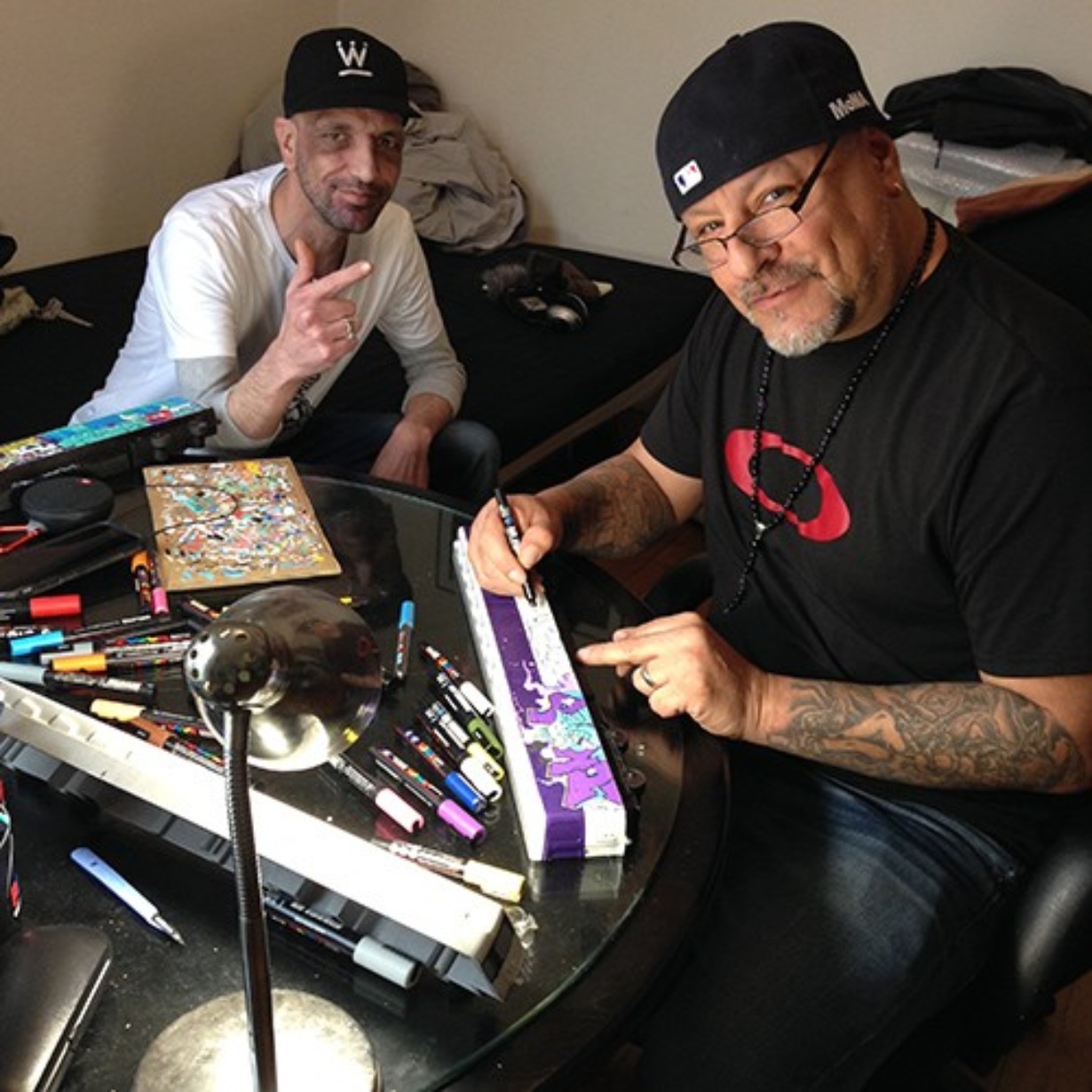
That’s right, when you come to Paris, you stay at Wuze’s. How did you meet?
Ah! We met at Gare express through a common friend, Yann Lazoo. I saw how talented he was. He’s good and knows how to use graphics software, which is important these days. He opened his door wide and we became friends. It’s cool to stay with someone and explore the city with them.
And he introduced me to the Posca staff, which is really very cool since not easy to find in New York. I love using them on canvas or trains [3D cars on which he paints and that will be exhibited at Next Street Gallery].
There’s also a documentary on you, The Nasty Terrible T-Kid. How did that happen?
I published a book in 2005 and at a signing in California, I met a guy named Carly from Love Machine films, a production company. He interviewed me and since it went so well, we said why not make a movie together? I had a lot of pictures from back then, they were easy to organise. It’s cool to see your work on a big screen!
It’s interesting because in the United States, emerging cultures are very well documented. There are a lot of archives…
I’ve got tons of stuff on video, on all kinds of cassettes and, believe it or not, my ex-wife almost got rid of it all! We always had a camera when we were going to paint. We just filmed it all! We didn’t know what we were going to do with it.
There are also collectors that safeguard works. There are a few that follow my work, which gives me an opportunity to organise and file my pieces. These are very different people. In fact, a Wall Street trader introduced me to some people from the Radison hotels. They want me to paint their lobbies. I’m available!
When I was young, I was hardcore. Now, I want to be paid when I paint. I’m part of history! If Mister Orange, Donald Trump, wants a painting, he can pay! I’m ready to paint the wall he wants to build between Mexico and the USA. I’d write WELCOME! Welcome to your home!
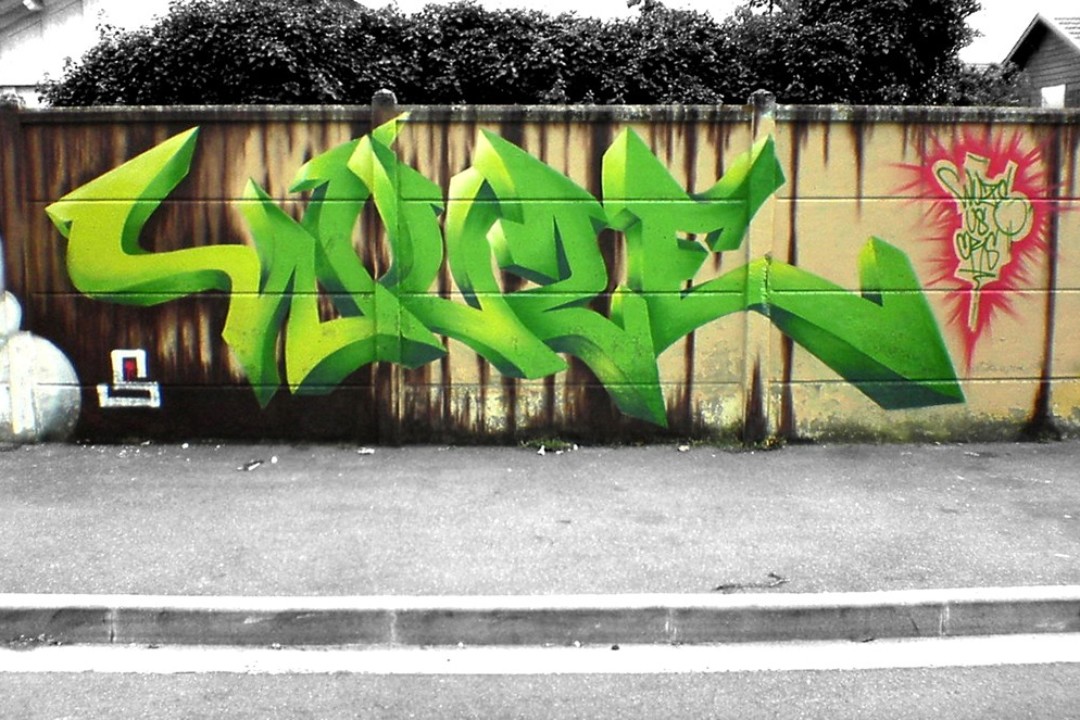
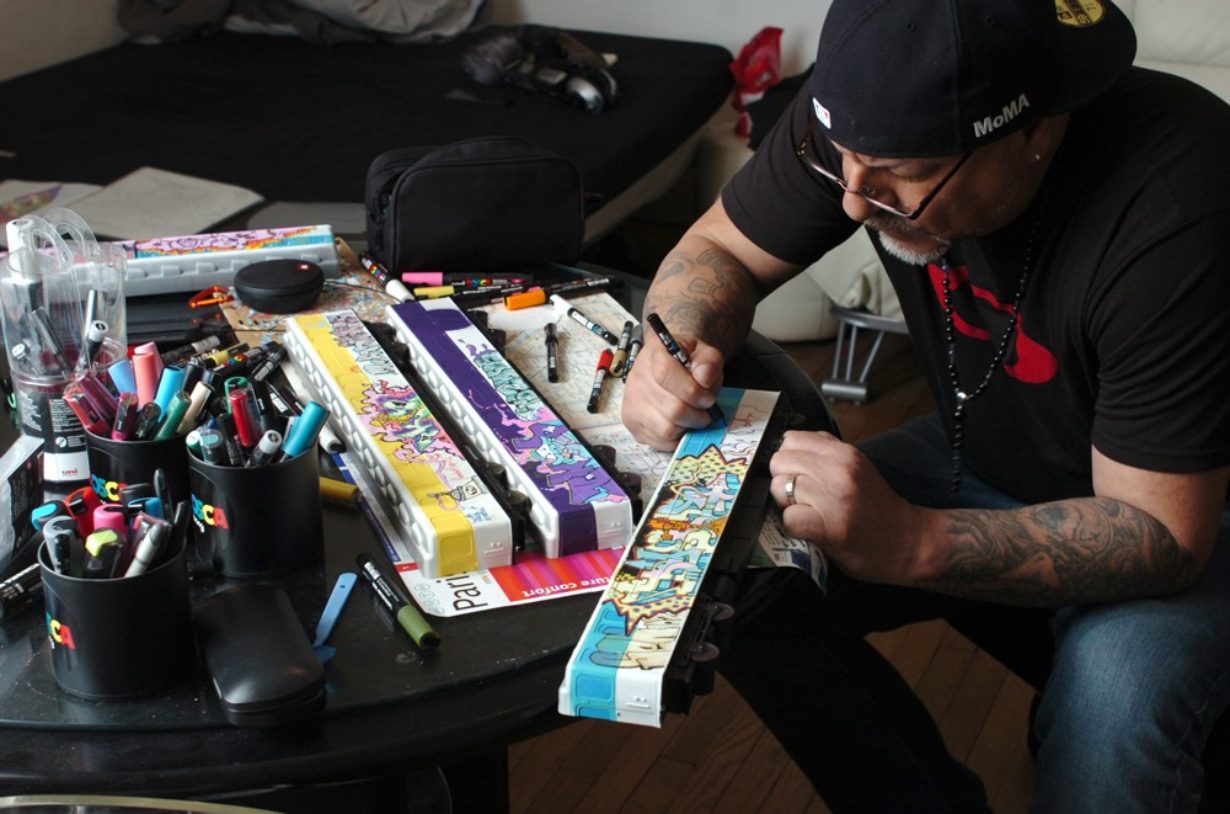
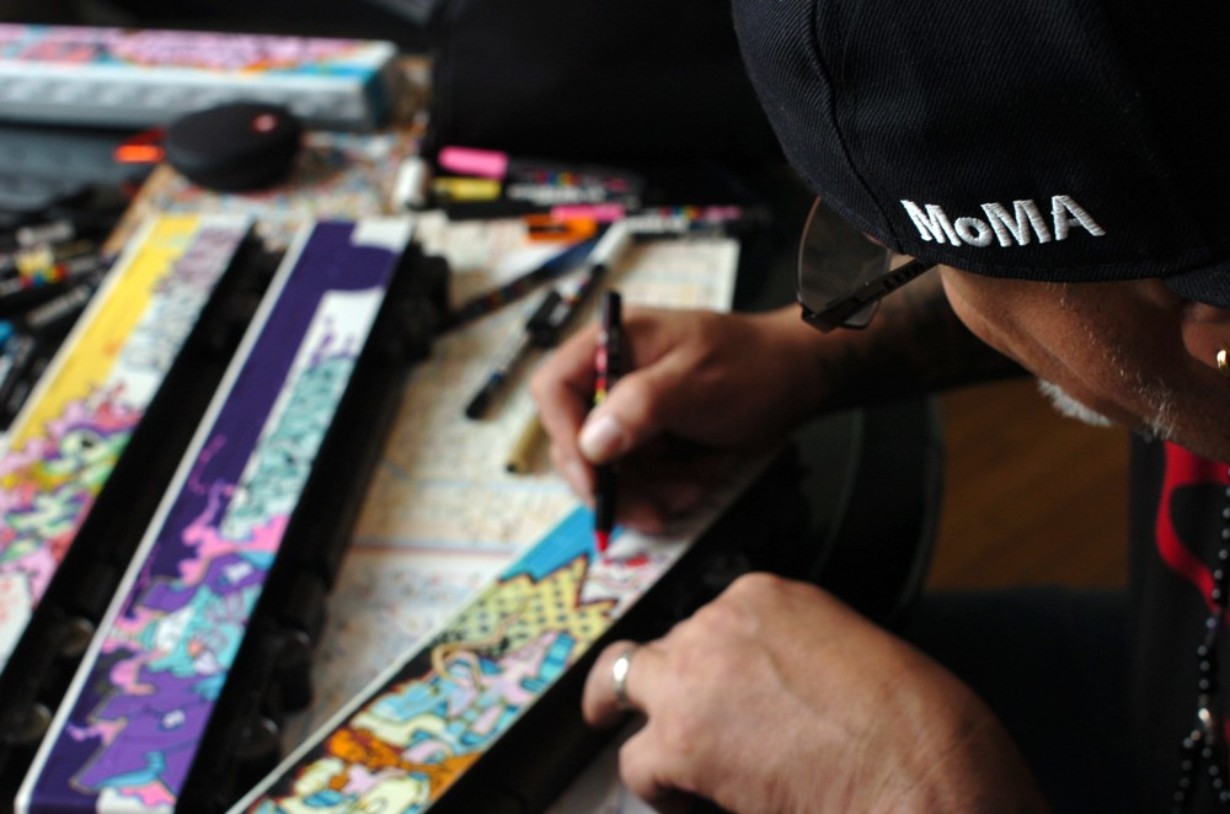
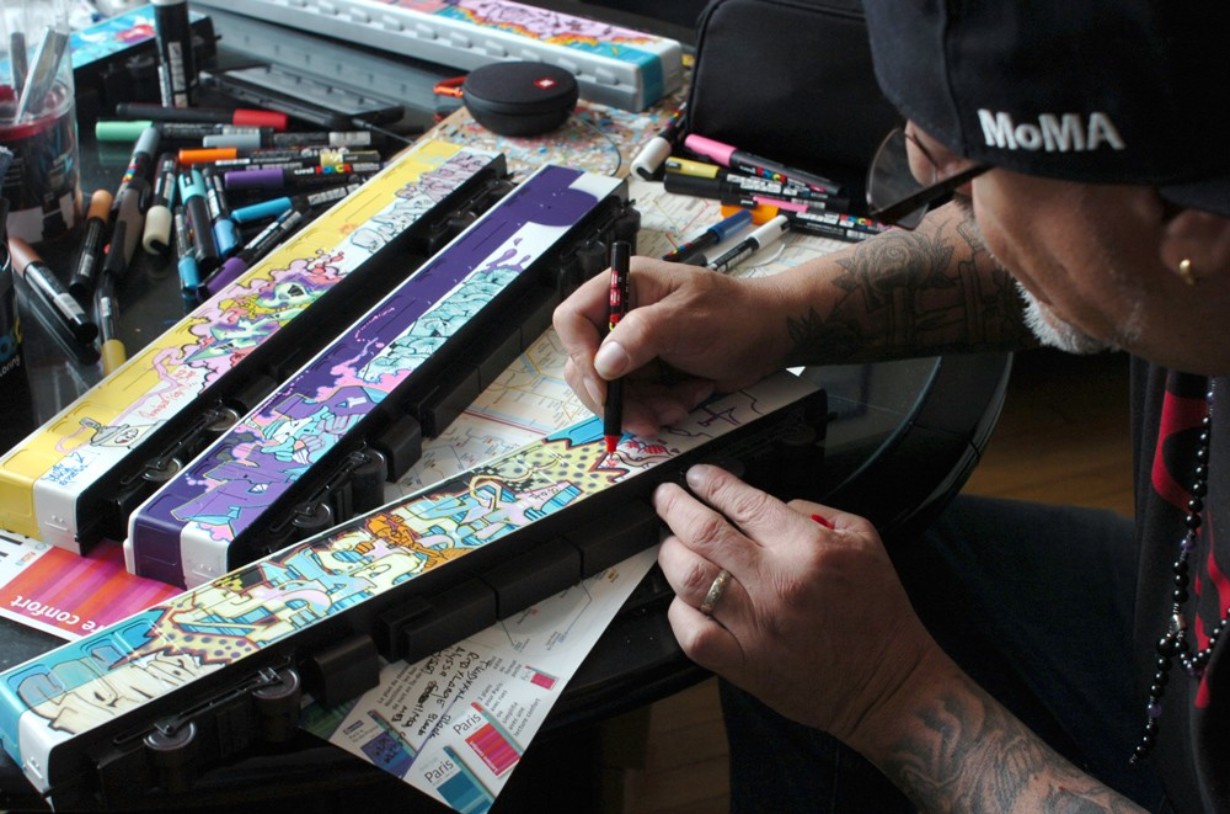
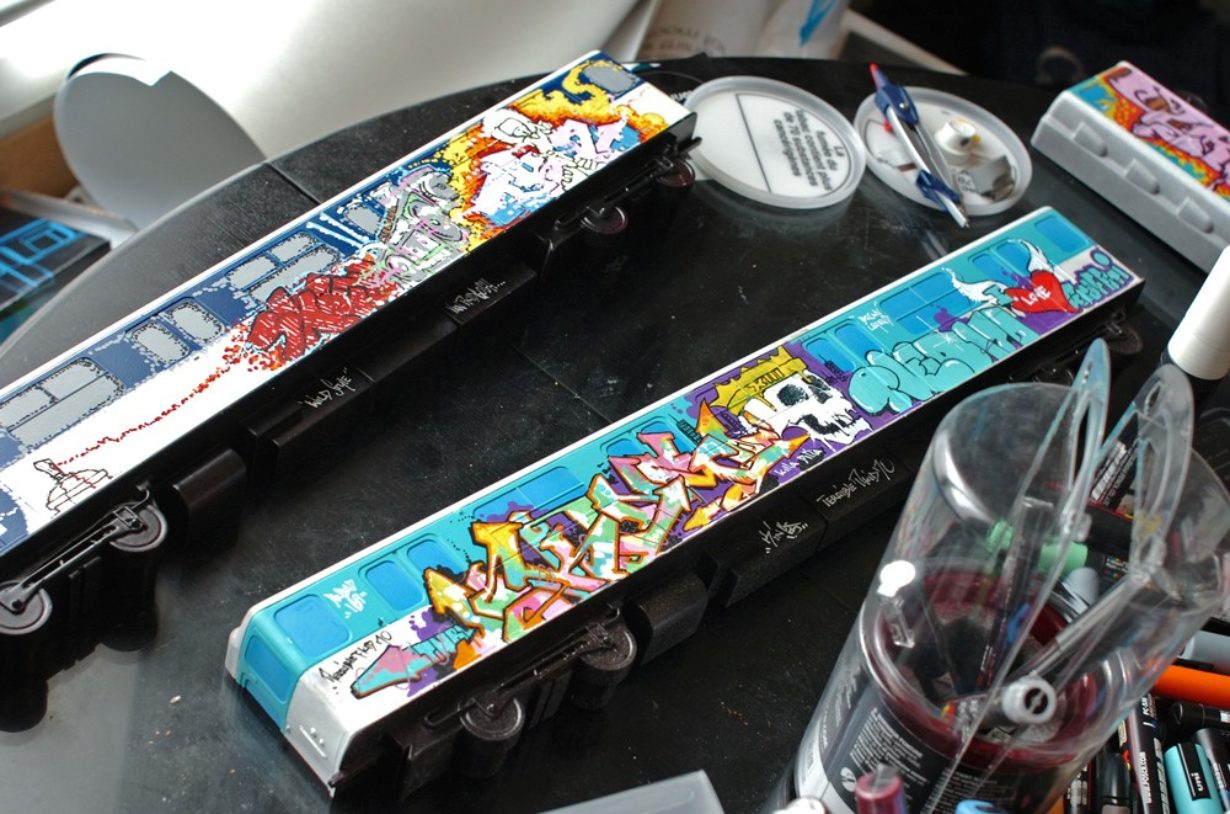
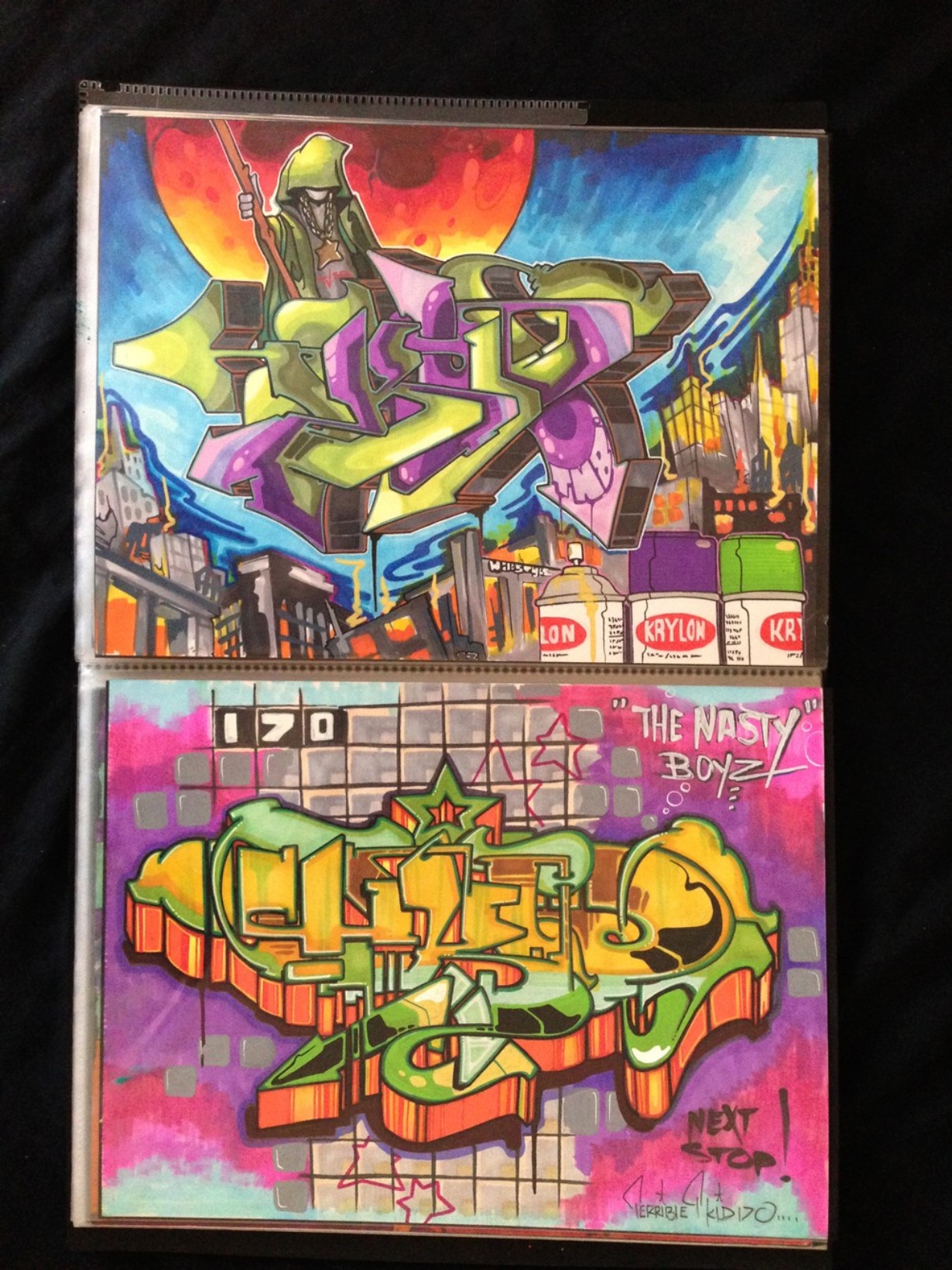



















.png)






















.png)






![[Supports]-[Papier-carton]-[1]](https://www.posca.com/wp-content/uploads/2018/06/supports-papier-carton-1-278x494-c-default.jpg)
![[Supports]-[Toile]-[1]](https://www.posca.com/wp-content/uploads/2018/06/supports-toile-1-278x494-c-default.jpg)
![[Supports]-[Mineraux]-[1]](https://www.posca.com/wp-content/uploads/2018/06/supports-mineraux-1-278x494-c-default.jpg)
